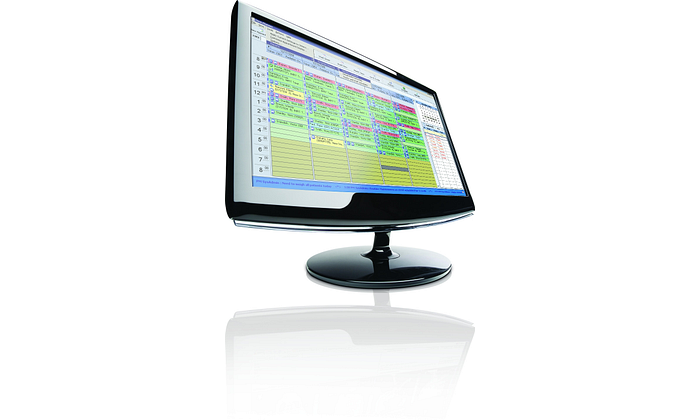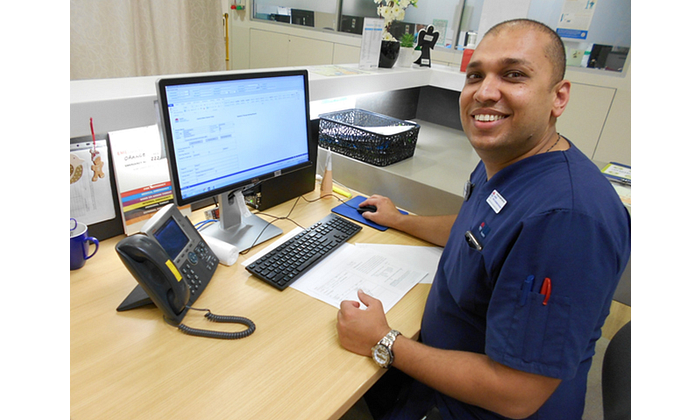Wellness checks are as advisable for processes as for people
 Since the opening of the Orange Health Service hospital in Australia in 2011, the Radiation Oncology Department has been efficiently running clinical workflows using the ARIA® oncology information system. While the physicists and radiation therapists are all adept and devoted ARIA users, there were as-yet untapped opportunities for ARIA to support other vital roles involved in the care of patients. These include secretarial administrators, nurses, allied health practitioners, and oncologists.
Since the opening of the Orange Health Service hospital in Australia in 2011, the Radiation Oncology Department has been efficiently running clinical workflows using the ARIA® oncology information system. While the physicists and radiation therapists are all adept and devoted ARIA users, there were as-yet untapped opportunities for ARIA to support other vital roles involved in the care of patients. These include secretarial administrators, nurses, allied health practitioners, and oncologists.
In 2018, Orange Health Service engaged with a team of Varian consultants for two purposes:
1) evaluate the health of existing workflows and optimize them further, and
2) bring the efficiency of electronic workflows to new users.
Orange Health Service is a public regional health center located in the central west of New South Wales, and its Radiation Oncology department service covers approximately a third of the land area of this east coast state. The Orange Radiation Oncology Department has been an integrated all-Varian-technology clinic from the beginning, relying on ARIA to automate and manage patient treatments. ARIA is Varian’s comprehensive information and image management solution for overseeing all aspects of oncology care, from diagnosis to post treatment follow up.
Now it was time to find out what more ARIA could do to enhance quality of care. “After using the system in a new center for a number of years, it was an opportune time to review our practices, processes and systems. Having someone with independent eyes look at what we were doing represented an opportunity to improve quality around our processes,” says Rod Hammond, chief radiation therapist.
 What came out of working with the Varian consultants? In addition to hardware and software recommendations for a paperless department, here are a few highlights of the optimized workflows and processes:
What came out of working with the Varian consultants? In addition to hardware and software recommendations for a paperless department, here are a few highlights of the optimized workflows and processes:
The secretarial process for booking new patients is now automated and streamlined. For example, when a new patient enters ARIA over the interface from the hospital EMR, a start-up Care Path is automatically attached to the patient, which sets in motion the series of tasks for registration and consultation.
Lauren Wright, department secretary, explains that “the implementation of the new care paths and processes including a New Patient Care Path and a more streamlined Treatment Summary Care Path has greatly improved our efficiencies and reduced room for error. By using these newly designed care paths, we are now able to track the process more efficiently and monitor what stage each patient is up to. If someone is on leave, the Care Paths also allow us to help each other out to keep their work up to date easily and proficiently.”
The consult workflow has been optimized too. Radiation oncologists monitor the Appointment Scheduling workspace for checked-in patients, which reduces unnecessary wait time. Further implementation of an appointment tracker are expected to make the billing and follow-up processes more electronic and seamless. Additionally, a Consult Encounter created in ARIA when the patient is registered now provides a consolidated view of all the data the oncologists need at the time of consult. Having all the necessary information right at their fingertips assists in a smooth, thorough, and informed consult for both the oncologist and the patient.
The nursing staff is well on the way to becoming paperless with ARIA. Instead of filling out paper forms and entering information into the electronic record later, nurses are now entering assessments and toxicity reports directly into ARIA in real time in the consult room with the patient. “As a result, we are better able to track and manage side effects, toward the goal of improving care and outcomes,” says Hammond.
 Robin Joseph, clinical nurse specialist adds, “The ARIA optimization consult process has brought everyone onto the same page. There is now more consistency in recording and rating toxicities, and we are now utilizing more features such as importing skin reaction photos for comparison over the patient’s treatment journey.”
Robin Joseph, clinical nurse specialist adds, “The ARIA optimization consult process has brought everyone onto the same page. There is now more consistency in recording and rating toxicities, and we are now utilizing more features such as importing skin reaction photos for comparison over the patient’s treatment journey.”
Allied crafts, such as dieticians and social services, have been brought on line in ARIA as well, through the creation of an Allied Health Encounter workspace. In ARIA, the allied health practitioner enters the ARIA Encounters workspace, selects the relevant Allied Health Encounter, and is presented with the necessary documents and task list to complete a systematic and informed patient consultation. The optimization process was very useful according to Lita Mathews, social worker, who said, “The consultants were keen to meet the needs of the Allied Health staff and understood the importance of having a streamlined, efficient and user-friendly pathway to document our encounters with our clients.”
According to Hammond, a lot was accomplished in a month’s time, from recommendations to implementation. The collaboration with the Varian team of Hana Tobe, global clinical operations consultant and Lee-ann D’Souza, clinical specialist, yielded several benefits cited by Hammond: “The engagement reinforced what we are doing in the radiation therapist and physics areas, confirming that we are utilizing ARIA efficiently. It has helped other craft groups identify efficiencies and streamline workflows and practices. And It has given us a picture of where we need to move forward in terms of training people.”
The success of the project stemmed in large part from being broadly inclusive, adds Hammond. “You can't concentrate solely on the medical staff, the therapists, and the physicists. You have to involve your whole department because the workflow is the whole department. If you get all the key stakeholders involved, including Allied Health, nursing, and administrative staff, then you get good buy-in to this process.” Finally, on the value of periodic ARIA optimization consults, Hammond concludes, “ARIA is always updating so there are regularly new features coming that can improve your work practices and workflows. Periodic reviews will always be of benefit to keep your department progressing and evolving.”
__________________________________________